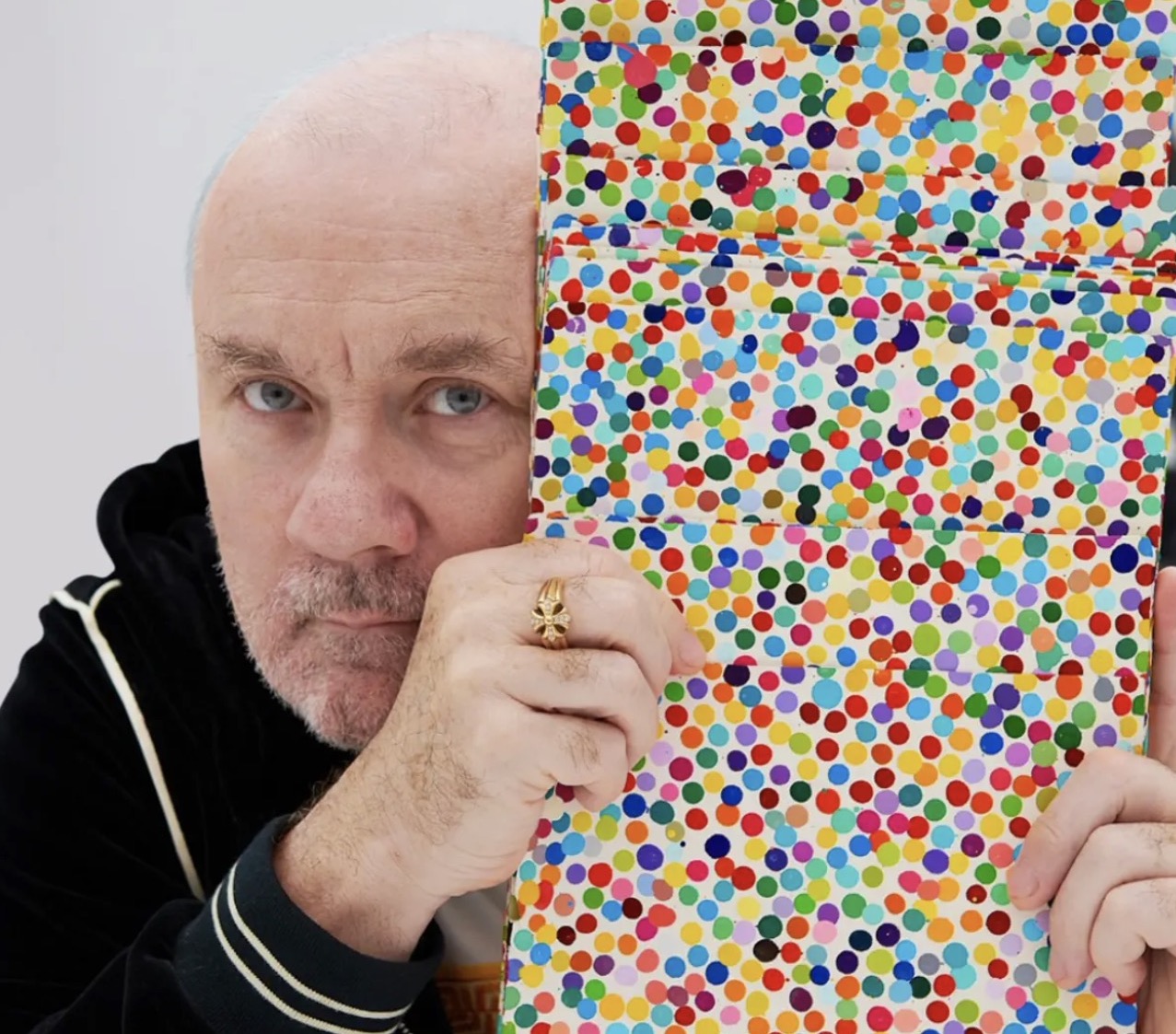Damien Hirst, the Turner Prize winning YBA artist known for his controversial works of dead animals in vitrines, is facing a backlash. A recent report in The Guardian newspaper has uncovered that a group of about 1,000 oil paintings on paper, linked to his latest NFT project, were not created in 2016 as claimed. Instead, these pieces were mass-produced in 2018 and 2019 by numerous painters employed by Hirst’s company, Science Ltd, across studios in Gloucestershire and London. One insider described the operation as akin to a “Henry Ford production line.”
The project at the centre of the controversy, The Currency, was a massive undertaking. It involved the creation of 10,000 paintings, each embellished with a microdot, an embossed stamp of authenticity, and a pencil-written title, date, and signature on the back. Launched in 2021, Hirst and Heni, the publishing platform Hirst’s business partner managed, assured buyers that the artworks were “created by hand in 2016.”
As Hirst stated in March 2021, The Currency aimed to “explore the boundaries of art and currency.” Each physical painting corresponds to a digital token or NFT. Priced at $2,000 each, the initial sale garnered approximately $18 million. Buyers were then faced with a choice: keep the NFT or trade it for the physical painting. Those opting for the NFT saw their corresponding physical artworks ceremonially burned by Hirst at Newport Street Gallery in October 2022.
However, the authenticity of these works has come into question. One collector who chose the physical painting reported that no certificate of authenticity was provided upon collecting his piece from Heni’s Soho headquarters. Following his decision, his NFT vanished from his metamask wallet, and all related email links, including his receipt, were deactivated.
Traditionally, the dates on artworks reflect the year of completion. Yet, Science Ltd and Heni lawyers argue that it is “usual practice” for Hirst to date works according to their conception year. They did not contest that at least 1,000 of the paintings dated 2016 were created years later. Sources suggest that several thousand were possibly produced in 2018-2019.
This is not the first time Hirst’s dating practices have been scrutinised. In March, The Guardian uncovered several of his formaldehyde sculptures, supposedly from the 1990s, that were made in 2017. At the time, Hirst’s representatives stated, “Artists are perfectly entitled to be (and often are) inconsistent in their dating of works.”
The impact of this controversy on the value of The Currency paintings remains uncertain. Around 100 of these works have been resold at auction, all bearing the 2016 date. According to Artnet’s price database, resale prices have varied widely, from £5,000 to £28,000.
Damien Hirst: A Brief Biography
Born on June 7, 1965, in Bristol, England, Damien Hirst emerged as one of his generation’s most controversial and influential artists. Raised in Leeds, Hirst’s early life was marked by a rebellious streak and a fascination with mortality, themes later central to his art.
Hirst moved to London in the 1980s to study Fine Art at Goldsmiths, University of London, where he became a leading figure in the Young British Artists (YBA) movement. This group of artists, characterized by their provocative works and media-savvy approaches, gained significant attention in the late 1980s and 1990s.
In 1991, Hirst gained widespread fame with his series of artworks featuring animals preserved in formaldehyde, including the iconic “The Physical Impossibility of Death in the Mind of Someone Living,” showcased a shark suspended in a glass tank. These works challenged traditional notions of art and explored themes of life, death, and decay.
Throughout his career, Hirst has continued to push boundaries. His spot paintings, butterfly installations, and controversial piece “For the Love of God,” a diamond-encrusted skull, have solidified his reputation as a daring and commercially successful artist. Hirst’s work often explores the intersection of art, science, and popular culture, frequently provoking debate and eliciting strong reactions from critics and the public alike.
In addition to his art, Hirst has been involved in various entrepreneurial ventures, including creating the publishing company Other Criteria and opening his own museum, Newport Street Gallery, in London. Despite facing criticism and legal challenges, Hirst remains a dominant force in the contemporary art world, continually redefining the boundaries of artistic expression.

